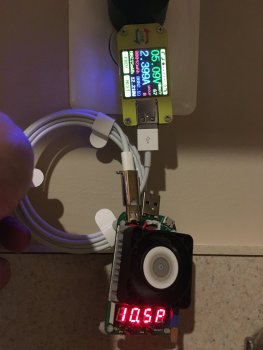I know that my 6S+ has the hardware to charge faster at 2.1Amps. I also know that it is too old to take advantage of USB-C Power Delivery.
If I get a USB-C to Lightning cable, will it:
1. Still charge at 2.1Amps if I plug it into a non-PD USB-C port such as on an HP EliteDesk 800 G4 (which has a USB-C 3.1 Gen 2 port, which, if I'm reading it correctly, can provide up to 3Amps)?
2. Charge at 2.1Amps if I plug it into a power bank with PD? (Specs on power bank says PD can charge at 5V/3Amps) Will the PD negotiate 2.1Amps or will it just slow charge at 1Amp because my phone can't use 3Amps?
I'm asking because I'm thinking about buying a cable to leave in my office at work (and since I could just plug it into my work computer and wouldn't have a brick, my coworkers wouldn't be able to just "borrow" it).
If I get a USB-C to Lightning cable, will it:
1. Still charge at 2.1Amps if I plug it into a non-PD USB-C port such as on an HP EliteDesk 800 G4 (which has a USB-C 3.1 Gen 2 port, which, if I'm reading it correctly, can provide up to 3Amps)?
2. Charge at 2.1Amps if I plug it into a power bank with PD? (Specs on power bank says PD can charge at 5V/3Amps) Will the PD negotiate 2.1Amps or will it just slow charge at 1Amp because my phone can't use 3Amps?
I'm asking because I'm thinking about buying a cable to leave in my office at work (and since I could just plug it into my work computer and wouldn't have a brick, my coworkers wouldn't be able to just "borrow" it).



